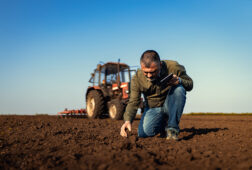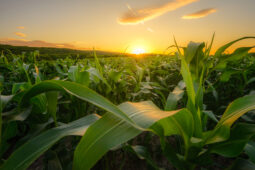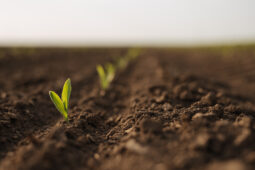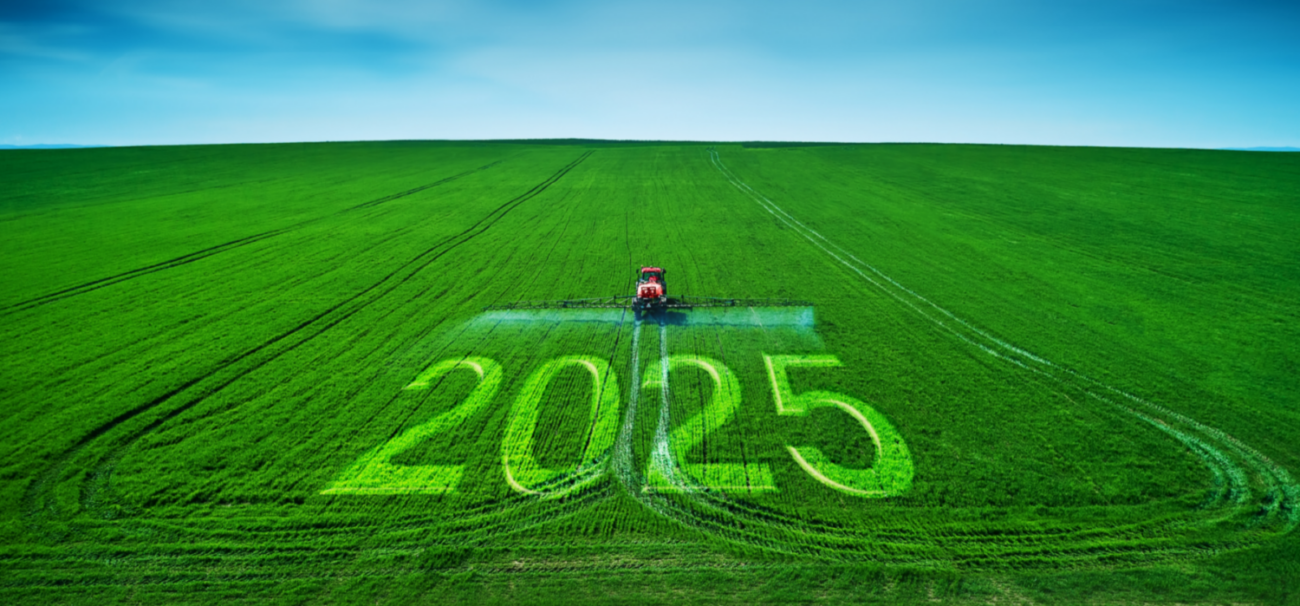Remote sensing tools and usage are commonplace in agricultural production today, as a way to monitor the status of a growing crop, head-off any potential issues, or identify areas of a field which need to be scouted in-person. For these reasons, the BiOWiSH on-farm demonstration trials are set up to use NDVI monitoring from satellites. NDVI stands for Normalized Difference Vegetation Index — a spectral-based measurement that can also be obtained from drones, or handheld devices.
How does NDVI work?
NDVI quantifies the ratio (reported between 0 and 1) of ‘Near Infrared’ light that is reflected off crop leaves relative to that which is absorbed. Higher reflection (i.e. an NDVI value closer to 1) of ‘Near Infrared’ light can indicate that a plant canopy is more full, that the leaves are more turgid, and that vigor (biomass) is high overall. Simply put, NDVI measures plant greenness, a direct measurement of chlorophyll content and photosynthesis, which is a basic but reliable way to gauge plant health and vigor, or yield.
At BiOWiSH, we can utilize satellite-based NDVI measurements to monitor on-farm demonstration trial progress during the season to assess BiOWiSH® treatment effects on the crop canopy, at field scale.
As with most remote sensing tools, factors such as cloud cover can interfere with a satellite’s ability to capture crop reflectance. However, NDVI measured frequently from satellite imagery can capture enough data from clear days to monitor crop progress. It’s a “bird’s eye view”, helping us better understand growing conditions and to compare treatments in a plot.
On-Farm Demo Examples
We conducted soybean demonstration trials in Brazil, using NDVI monitoring tools.
The purpose of these trials was to determine the effects of the BiOWiSH® Fertilizer Enhancement when coated onto Monoammonium Phosphate (MAP) and applied at a common Brazil application rate for soybean production.
The fields were divided into two halves, with one half receiving uncoated MAP as the Control and the other half receiving MAP coated with the BiOWiSH® Fertilizer Enhancement.
NDVI Images Provide Progress Insights for Trial Comparison
Here’s an example of a plot’s NDVI image at canopy closure on January 20, 2023. 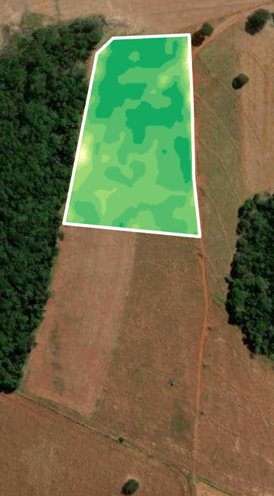
Control
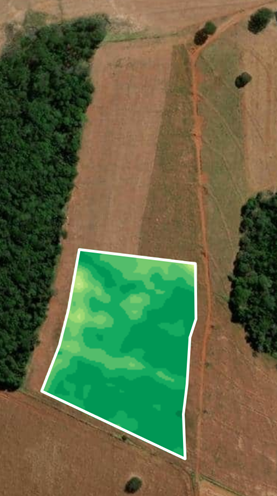
Control + BiOWiSH
The average NDVI score across the trials for the BiOWiSH® treatment was 9.5% higher than the Control, which is illustrated in the above example images. There is more dark green visible in the BiOWiSH® treatment, compared to the Control, which would suggest a denser crop canopy as a consequence of improved soil conditions for increased plant vigor.
Does NDVI Score Suggest a Yield Correlation?
Although this may not be the case in every situation, the short answer is “yes,” NDVI can be a reliable indicator of yield. A number of research studies1 over the last 20 years have come to this conclusion.
Harvest Results
The higher NDVI score served as an indicator of higher yield in these soybean demo trials. Because the NDVI score was captured during a critical growth period at canopy closure, the higher NDVI score for the Control + BiOWiSH® treatment was an indicator of optimized yield potential by improved nutrient uptake. This ultimately resulted in an average 9.8% yield increase (350 kg/ha or 5.2 bu/acre) for the BiOWiSH® treatments over the Control.
The BiOWiSH® Fertilizer Enhancement enhances beneficial microbes in the rhizosphere and optimizes soil conditions for greater root mass. This increases nutrient use efficiency and supports nutrient uptake, which is designed to improve soil conditions for increased plant vigor.
With greater plant vigor (biomass), the quicker the crop canopy closes, and the less likely that yield-robbing weed pressure develops. Also, when nutrient use efficiency is improved, the crop is able to complete pod fill more efficiently.

Overall, NDVI proved to be helpful in monitoring the progress of our demo plot and is another way to ensure that BiOWiSH® Enhanced Fertilizer helps farmers achieve consistent results across a broad range of crops, operating conditions, and management practices. Review our research trials and case studies for more information.
Author
Alex Susko
Agronomy Product Manager
BiOWiSH Technologies Inc.
Cincinnati, Ohio 45208 USA

